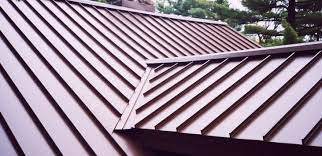When it comes to selecting the best material for commercial flat roofing, it’s like navigating a maze of options with each path promising something different. But fear not, as we are here to guide you through this labyrinth of choices.
Whether you are looking for durability, cost-effectiveness, or eco-friendliness, each roofing material brings its own set of advantages and drawbacks. Let’s embark on this journey together to uncover which material will provide the perfect option for your commercial roof.
Advantages and Drawbacks of EPDM Roofing
EPDM roofing, commonly known for its durability and cost-effectiveness, stands out as a popular choice for commercial flat roofing due to its exceptional weather resistance and minimal maintenance requirements. EPDM, which stands for Ethylene Propylene Diene Terpolymer, is a synthetic rubber membrane that offers excellent protection against UV radiation, ozone, and temperature extremes. This material is highly resistant to hail, wind, and other weather conditions, making it suitable for various climates.
One of the main advantages of EPDM roofing is its longevity. When properly installed and maintained, EPDM roofs can last up to 50 years. Additionally, EPDM is relatively easy to install, which can help reduce labor costs during the roofing process. However, EPDM roofing may not be the best option for roofs with high foot traffic, as the material can be punctured more easily compared to other roofing materials.
Comparing TPO and PVC Roofing
When comparing TPO and PVC roofing for commercial flat roofs, it’s essential to consider their unique characteristics and suitability for different applications.
Thermoplastic Polyolefin (TPO) roofing is known for its energy efficiency and ease of installation. It offers excellent resistance to tears, punctures, and UV radiation. TPO roofs are typically white or light-colored, reflecting sunlight and reducing cooling costs.
On the other hand, Polyvinyl Chloride (PVC) roofing is highly durable and resistant to chemicals, grease, and fire. PVC roofs have excellent dimensional stability and are suitable for roofs where grease or oil discharge is a concern. However, PVC roofing can be more costly than TPO and may not be as environmentally friendly.
When choosing between TPO and PVC roofing systems, it’s crucial to evaluate factors such as cost, environmental impact, specific application requirements, and the expertise of the roofing contractor to ensure the best long-term performance for your commercial flat roof.
Benefits of Built-Up Roofing Systems
A cost-effective and durable option for commercial flat roofs, built-up roofing systems consist of multiple layers of bitumen and reinforcing fabrics to provide long-lasting protection against the elements. These systems offer several benefits that make them a popular choice for many commercial buildings.
One key advantage of built-up roofing is its excellent waterproofing properties. The multiple layers of bitumen and fabric create a seamless barrier that effectively prevents water penetration, reducing the risk of leaks and water damage to the building’s interior.
Additionally, built-up roofing systems have a long lifespan, with proper installation and regular maintenance, they can last for decades. This longevity makes them a cost-effective choice over the long term, as they require fewer repairs and replacements compared to some other roofing materials.
Moreover, built-up roofing systems provide excellent insulation, helping to regulate indoor temperature and reduce energy costs. The layers of bitumen and insulation materials help to keep the building cool in the summer and warm in the winter, enhancing overall energy efficiency.
Exploring the Durability of Metal Roofing
Metal roofing stands out as a highly durable option for commercial flat roofs due to its exceptional longevity and resistance to various environmental factors. Metal roofs have a long lifespan, often lasting 40-70 years or more, depending on the type of metal used. Materials such as steel, aluminum, and copper are commonly used due to their strength and corrosion resistance. These roofs are highly resilient to harsh weather conditions, including heavy rain, snow, high winds, and extreme temperatures.
The durability of metal roofing is further enhanced by its resistance to fire, mildew, insects, and rot. Unlike other roofing materials, metal isn’t susceptible to cracking, warping, or shrinking over time. Additionally, metal roofs require minimal maintenance, reducing the need for frequent repairs and upkeep. This makes them a cost-effective option in the long run, despite potentially higher initial installation costs. Overall, the durability of metal roofing makes it a reliable choice for commercial flat roofs in various climates and environments.
Considerations for Green Roofing Options
Considering various factors such as environmental impact and energy efficiency, green roofing options offer a sustainable solution for commercial flat roofs. When opting for a green roof, several key considerations come into play.
Firstly, the type of vegetation to be used must align with the local climate and building structure to ensure optimal growth and longevity. Sedum plants are a popular choice due to their low maintenance requirements and ability to thrive in various conditions.
Moreover, the structural integrity of the building must be assessed to determine if it can support the additional weight of a green roof. Factors such as drainage, waterproofing, and roof slope are crucial in the design and installation of a green roof to prevent water leakage and ensure proper water runoff.
Additionally, incorporating insulation layers beneath the green roof can enhance energy efficiency by providing natural thermal regulation and reducing heating and cooling costs. By carefully evaluating these considerations, green roofing options can’t only promote environmental sustainability but also offer long-term benefits for commercial buildings.


























